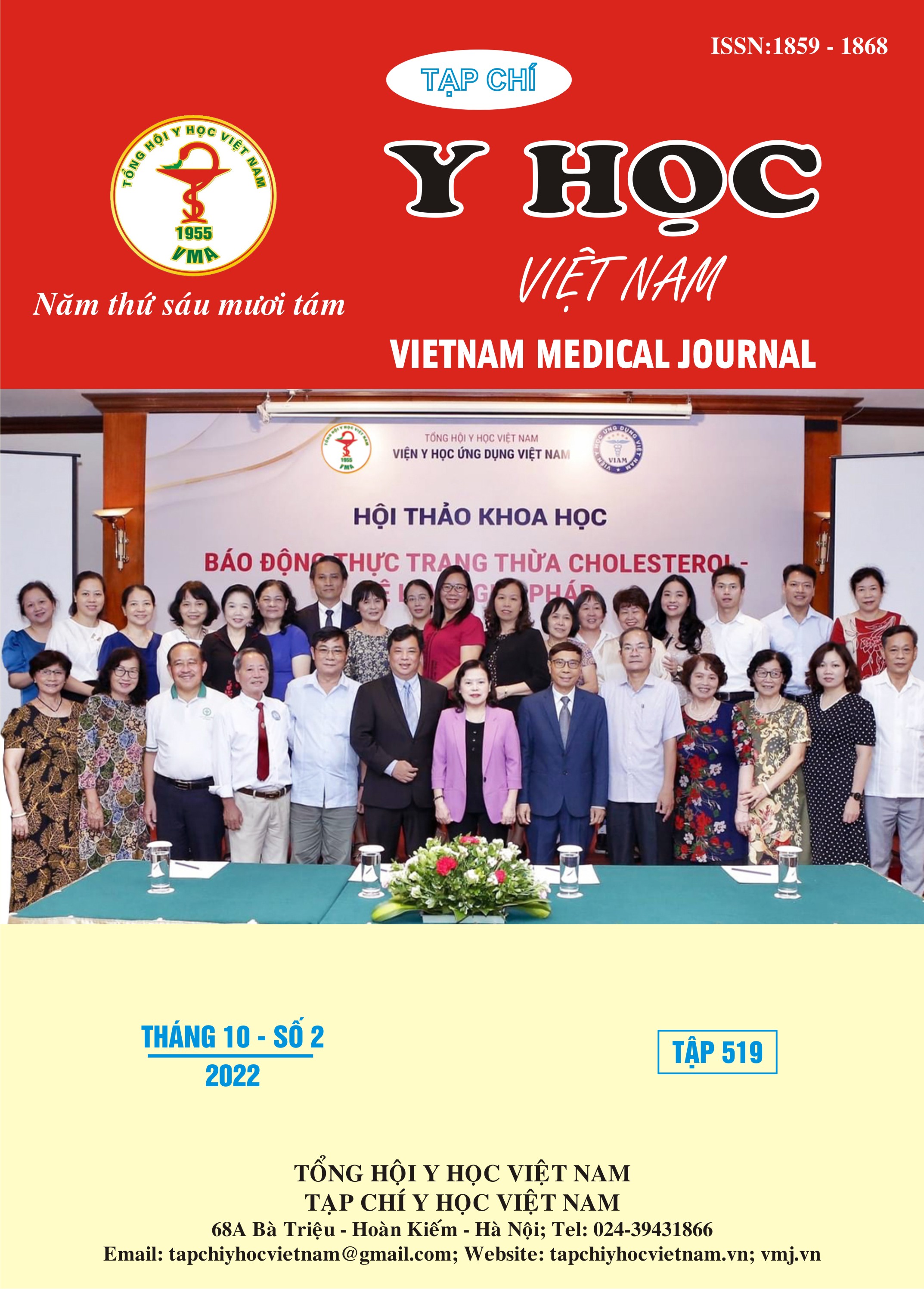CLINICAL FEATURES, LABORATORY CHARACTERISTICS AND TREATMENT OUTCOMES OF THE PATIENT WITH METAL POISOING AT POISON CONTROL CENTER OF BACH MAI HOSPITAL
Main Article Content
Abstract
Objectives: to describe the epidemiology, clinical, subclinical characteristics and treatment outcomes of metal poisoned patients at the Poison Control Center of Bach Mai Hospital. Subjects and methods: A descriptive study on 60 patients with metal poisoning (tin, copper, lead, arsenic, mercury) treated at the Poison Control Center of Bach Mai Hospital from January 2018 to August 2022. Results: The median age was 34 (23 – 36), the most common in the 18 – 59 age group (76,7%), male/female ratio: 1,5/1. Geographic and occupational features were related to tin poisoning. The onset of symptoms and clinical features varied with neurological, circulatory, respiratory, digestive, and skin abnormalities; especially nerve damage accounted for a high rate in the group of tin poisoning (85,7%). Subclinical at the time of admission, brain damage on MRI in patients with tin toxicity (71,4%); copper (56,7%), mercury (25%). severe hypokalemia (19.0%), metabolic acidosis only seen in patients with tin toxicity (28,57%); anemia was highest in lead poisoning (45,5%). Treatment outcomes: complete recovery (68,3%), sequelae (30%), fatality (1,7%); Most of the clinical and subclinical abnormalities improved markedly after treatment, the difference was statistically significant (p < 0,05). Conclusion: Metal poisoning caused multi-organ damage, many sequelae; Tin poisoning was common in PVC recycling workers, brain damage had a high rate in patients with tin and copper poisoning.
Article Details
Keywords
Metal, tin, copper, lead, arsenic, mercury
References
2. Flora SJS, Pachauri V. Chelation in metal intoxication. Int J Environ Res Public Health. 2010;7(7):2745-2788. doi:10.3390/ijerph7072745
3. Guo F, Lu X wei, Xu Q ping. Diagnosis and treatment of organotin poisoned patients. World J Emerg Med. 2010;1(2):122-125.
4. Du Y. Acute Trimethyltin Poisoning Caused by Exposure to Polyvinyl Chloride Production: 8 Cases. Am J Med Sci. 2021;0(0). doi:10.1016/j.amjms. 2021.02.010.
5. Mazumder DN, Das Gupta J, Santra A, Pal A, Ghose A, Sarkar S. Chronic arsenic toxicity in west Bengal--the worst calamity in the world. J Indian Med Assoc. 1998;96(1):4-7, 18.
6. Đỗ Thanh Hương, Phân tích mối tương quan giữa đột biến gen ATP7B và kiều hình của bệnh nhân Wilson ở Việt Nam, Luận án tiến sĩ y học, Đại học Y Hà Nội, 2016.
7. European Association for the Study of the Liver. EASL Clinical Practice Guidelines: Wilson’s disease. J Hepatol. 2012;56(3):671-685. doi:10.1016/j.jhep.2011.11.007


